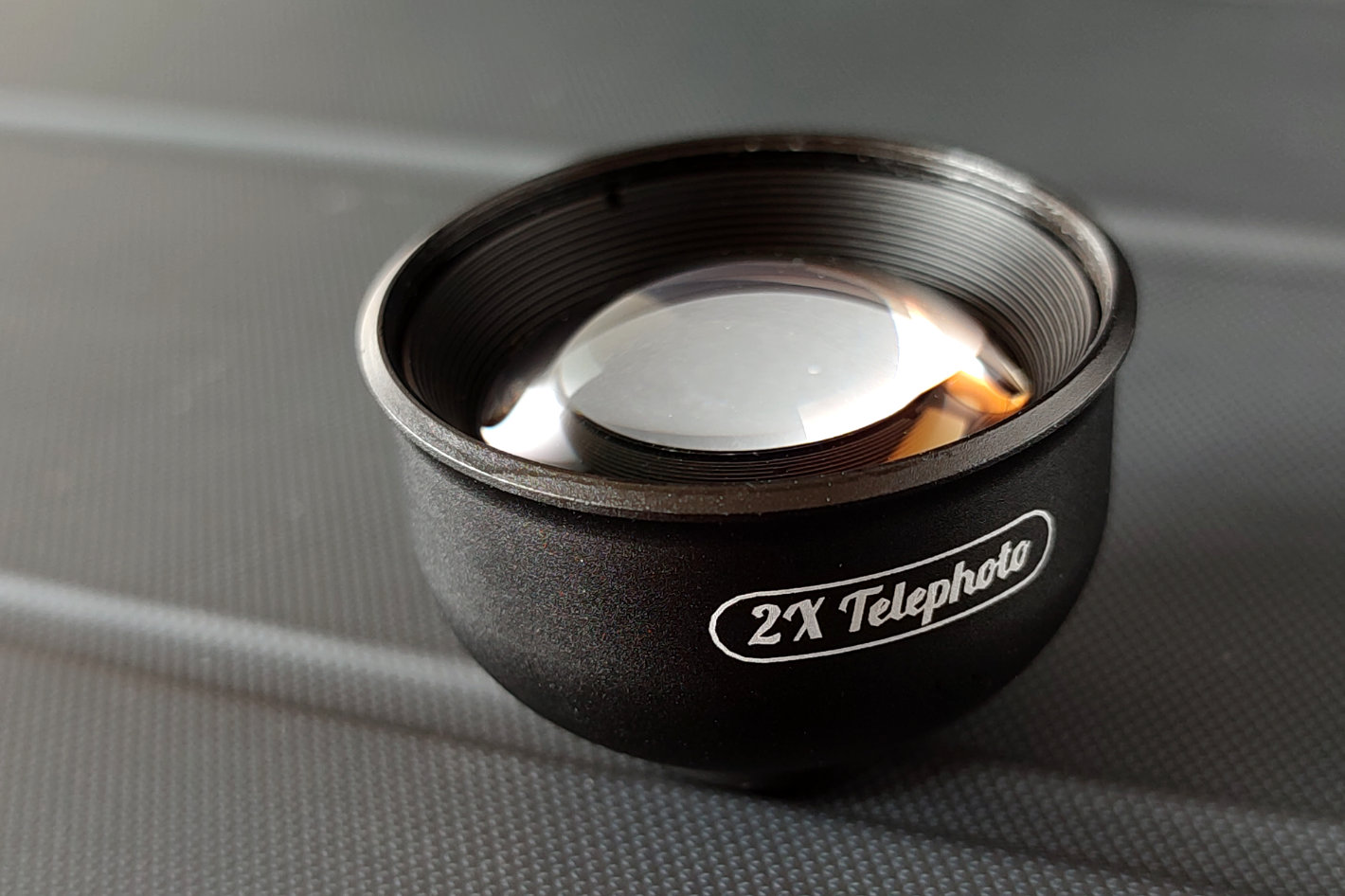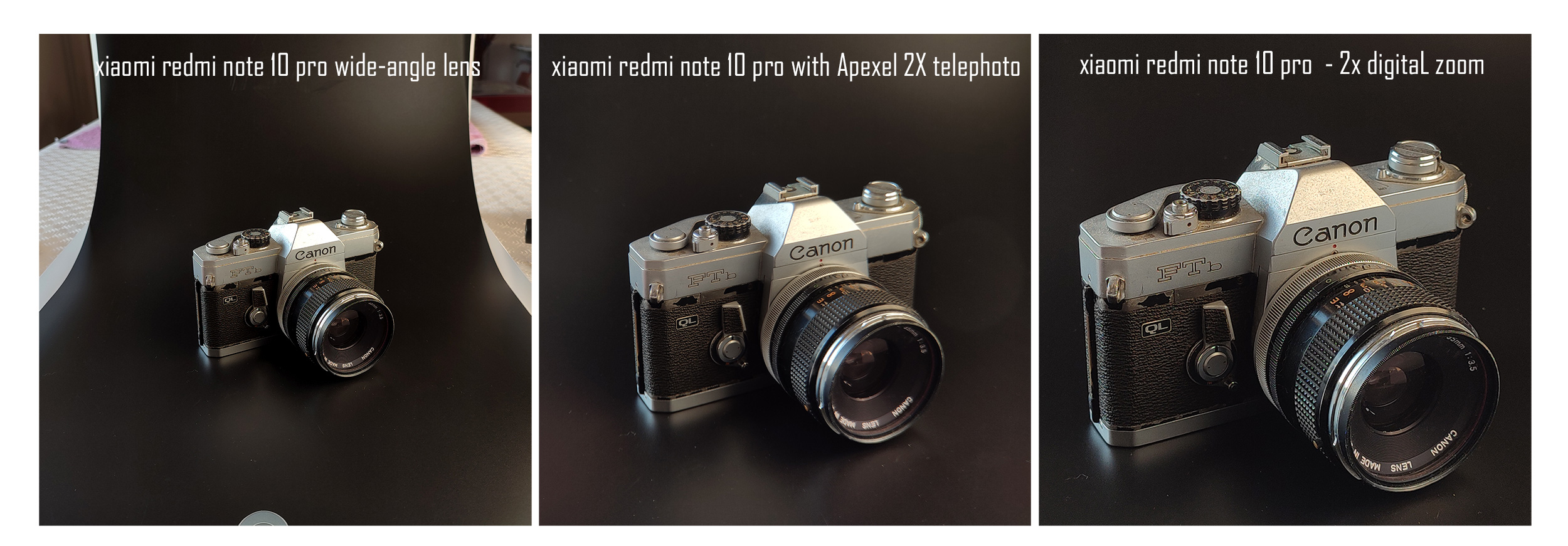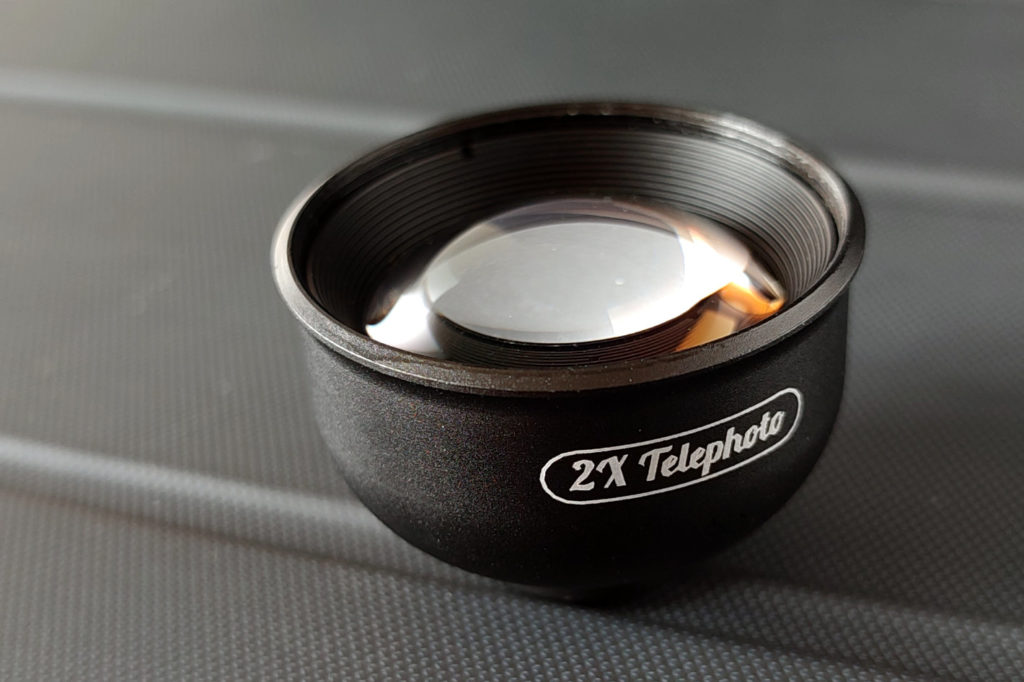
One of the first lenses I bought for my Redmi Note 4 smartphone, a model from 2017, was a macro lens, which allowed me to get close to some subjects with that entry-level model. The second lens I imagined I needed was a telephoto. I was wrong…
Everything I read everywhere praises how telephotos (or teleconverters…), usually doubling the focal length of the base lens, allow for more creative work when using a smartphone. As many entry level smartphones rarely offer a real optical lens beyond the regular wide-angle, you may be tempted to buy an external “telephoto” to expand your creative options. Believe me, you probably will not need it. But keep reading.
There are many telephoto lenses available for smartphones, some offering as much as 35x “zoom” over the base lens, but I do not believe those work as suggested by the marketing. All I needed was a 3x telephoto, which would take my 24mm wide-angle to a comfortable 72mm field of view coverage (compared to the 35mm format, which is always reference here), but looking at what the market offered I found that 2x was the most common converter available. In my mind, having the macro lens (more about this in another article, another day) and the telephoto – even 2x – would expand my creative options when using a smartphone.
If I had acquired the 2x telephoto lens back in 2017, for the Redmi Note 4 smartphone, I might have been happy with it, but as I moved on to better smartphone models, my perception of its usability changed, and the recent move to the Samsung Galaxy S22 Ultra (which is being used as a camera), with its 70mm and 230mm optical lenses, changed drastically what I think about external lenses for smartphones. Still, as I keep a Xiaomi Redmi Note 10 Pro as my regular smartphone, which has a limited set of lenses – ultra wide-angle, wide-angle and macro – I decided to explore what a 2x telephoto would offer me.
 When a 2x telephoto is less than it promises
When a 2x telephoto is less than it promises
Out of dozens of options available I decided to choose Apexel, and because the company has a 5-in-1 kit with five different lenses, from fisheye to macro for +/- 50 dollars, I decided to order it, and test the different lenses, although the 2x telephoto was the one that really interested me. I’ve written an entire article about the fisheye, super-wide-angle, wide-angle and macro 10x and, as I noted then, I decided to write another article centered on the 2x telephoto.
For this article I decided to test the Apexel 2x telephoto with both Xiaomi smartphones, the Redmi Note 4, from 2017, and the Redmi Note 10 Pro, from 2021, which continues to be one of the best affordable solutions for photographers. Apexel makes a series of claims about this lens, which I am not going to mention here, because most of it is pure marketing blurb and nothing else. One thing I need to highlight, though, is that the 2x the company claims its telephoto offers is nowhere to be seen. From the comparisons made while testing it I would say it’s about 1.5x, so if you’re hoping to get somewhere close to a “nifty fifty” – as doubling the 24mm focal gives you around 48mm, or a 50mm if we round the numbers … – the Apexel 2x telephoto is not the one to choose.
Maybe lenses from other brands really offer a 2x increase in focal length (I’ve not had a chance to try them), but the Apexel doesn’t. Having tried to contact the company multiple times, about different subjects related to its products, without any success, I don’t feel very confident suggesting the Apexel 2x telephoto as a good buy.
Having determined that the effective focal length of Apexel’s telephoto is around 1.5x and not 2x, I decided to create a set of images with the Redmi Note 4 that shows the base lens coverage and goes from there to show the image captured with the 2x telephoto and… surprise, using the smartphone’s 2x digital zoom.
 A 2x crop will probably be the best choice
A 2x crop will probably be the best choice
The image captured using the smartphone’s ability to crop the image shows what 2x really is… and confirms that Apexel’s claim is not true. Furthermore, a simple visual comparison confirms that the smartphone’s direct image is usable and competes favorably with Apexel’s capture… without the need to bother about using an adapter and fine adjust the lens in position before taking a shot. So, even with the limited sensor in the Redmi Note 4, it’s better to just use digital cropping – up to 2x it works fine – and shoot. No need for any contraption…
Well, what is true for a 2017 smartphone is even more so when you try to use the lens with the Redmi Note 10 Pro, which shows the same type of results: a base image using the 26mm lens, a second image using Apexel’s telephoto and finally the digital crop – 2x – showing what 2x really is. Again, it’s better to forget this 2x telephoto and simply use crop – or digital zoom, if you want to call it that – especially with modern smartphones, which have better sensors.
The Redmi Note 10 Pro is a good example of this modern generation of smartphones. Not only does it allow you to shoot a 12MP file (3000×4000 pixels) with a 2x crop, but it also gives you the option to shoot using all the pixels in the sensor without binning, that’s 108MP, for a 9000×12000 pixels file, using the same 2x crop. And just to make things clear for you, when shooting at 108MP, the “digital zoom” is limited to 2x, the exact same amount that Apexel’s telephoto promises but never reaches.
When it comes to video, the Redmi Note 10 Pro also works using the 2x crop, which can be chosen directly oin the screen, making it easy to change between the ultra wide-angle, wide-angle and “telephoto”, which you might find useful for a faster workflow in video. It’s also possible to go beyond 2x but remember quality will suffer.
To cut a long story short, I believe that with modern smartphones you rarely need to use external lenses, and the so called 2x telephotos for smartphones, which once seemed so important, can be forgotten by most people. Just crop to your heart’s content… but do remember that too much cropping can degrade the quality of the image: 2x, 3x is within the realm of what’s possible, as my Xiaomi Redmi Note 10 Pro and Samsung Galaxy S22 Ultra show. In fact the S22 Ultra can go beyond that, although the quality at the 100x Samsung claims it does is not something for photographers, more a solution for painters…

Filmtools
Filmmakers go-to destination for pre-production, production & post production equipment!
Shop Now













